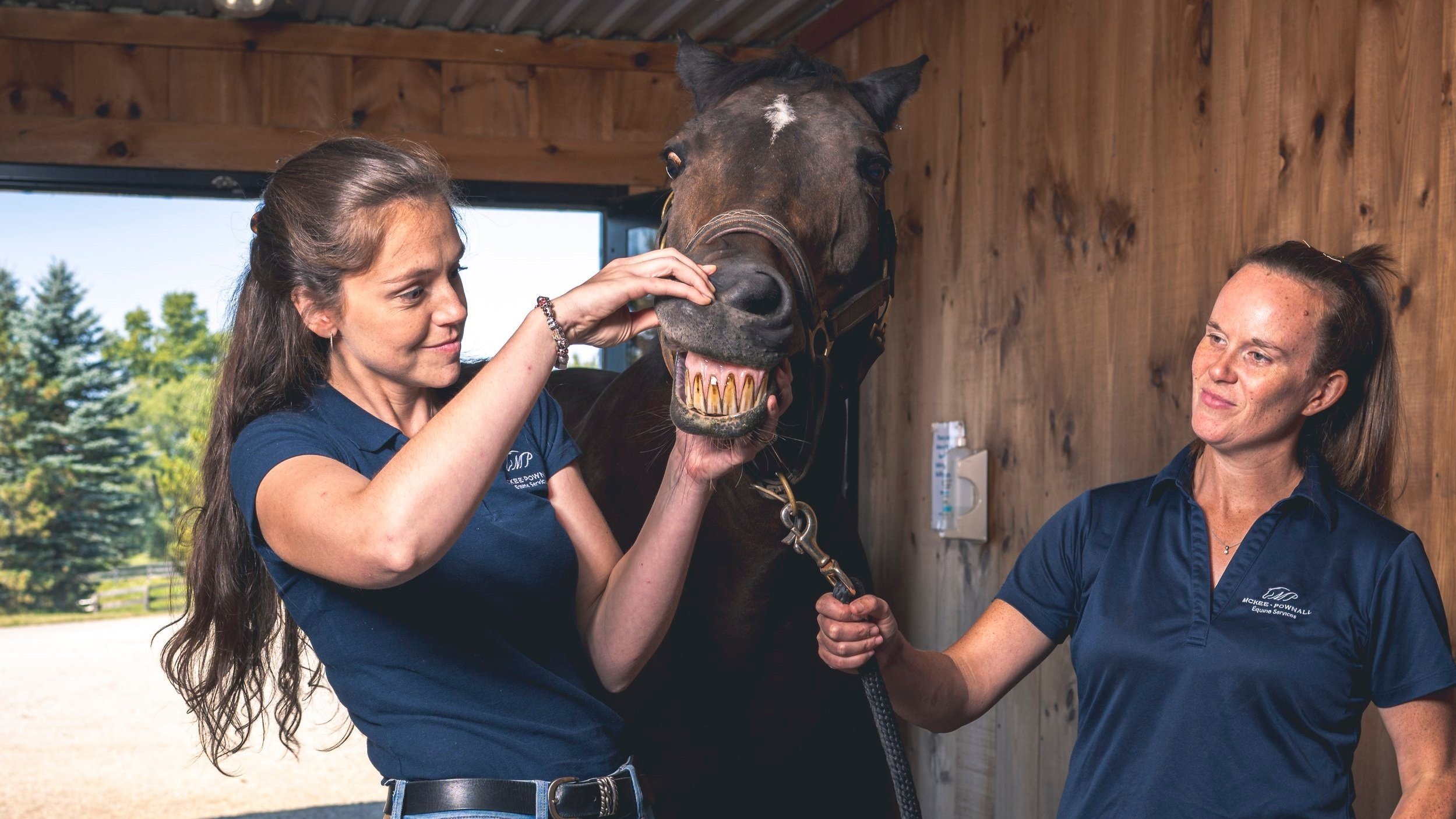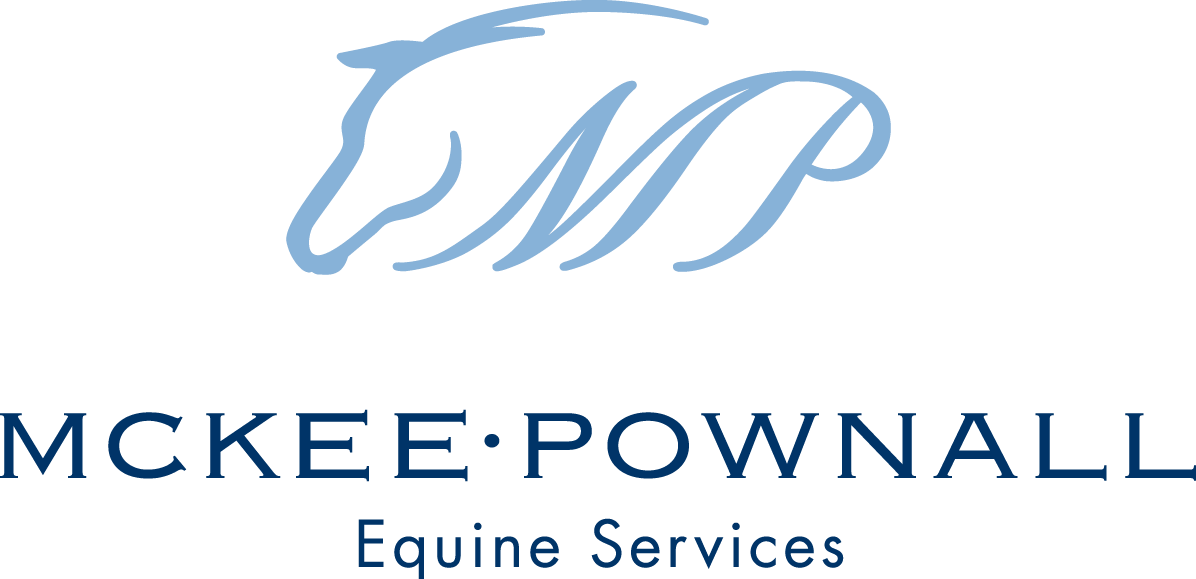
Equine Dentistry
Horses can suffer from many dental disorders that can affect feed utilization, performance, and general well-being. An annual dental visit that includes a thorough examination and tooth floating if necessary will ensure optimal dental performance.
We are equipped to offer routine oral health care in addition to the following dental services:
Dental X-rays to identify infected and diseased teeth, retained wolf tooth fragments, sinus diseases, and tumours.
Extraction of loose and diseased teeth
Geriatric horse dentistry
Miniature horse dentistry
Performance dentistry including bit seats
Corrective floating on abnormal and deformed mouths with problems like parrot mouths, waves and sheared incisors
A dental evaluation form with a description of abnormalities and work performed for you to keep. This form is also entered in our medical records so we can track your horse's progress on subsequent visits.
Veterinary Dentistry at McKee-Pownall Equine Services
The veterinarians at McKee-Pownall have a special interest in dentistry and actively pursue continuing education on the subject.
We are often "second in" on horses that have floated with hand equipment and no speculum, and typically discover many deficiencies on proper examination. Hand floating done by unqualified individuals may seem like a good way to save money, but can have damaging consequences for your horse's health and well being.
Listen to “Tooth Be Told”
What Are Common Dental Conditions that can come up during an annual exam?
There are many common dental conditions but we can break them down into a couple of categories:
Occlusion Abnormalities are anything that affects the horses’ normal circular grinding motion. This can be a parrot mouth or overbite, where the upper incisors protrude further than the lowers. We can also have wave mouths, where instead of a nice level grinding surface, we have a wave which affects how they grind their teeth. Missing and dominant teeth are also common, where if we are missing a tooth the opposite tooth that normally grinds on that tooth over erupts into the gap. These are just a few occlusional issues we see.
There is also peredontial disease, where food is caught between or beside the teeth. These are diastemas, gaps and periodontal pockets beside the teeth. Trapped food equals trapped bacteria and this leads to compromising our periodontal ligament. The feed can then pack deeper beside the tooth and therefore more bacteria which can eventually lead to a tooth infection.
One of the dental diseases that commonly affects our middle aged and senior horses’ incisor and canine teeth called EORTH or Equine Odontoclastic Tooth Resorption and Hypercementosis(that’s a mouthful!) This is a painful and progressive condition where the horses’ canines and incisors become bulbous, so there is extra cementum laid down at the roots. They also have holes develop within the teeth and destruction of the surrounding bone. Sadly, it’s not yet known why this happens and currently the only proven treatment is to remove the painful teeth. A simple way to test for EORTH is a carrot test- any horse with incisors should be able to bite through the carrot, and if they are not wanting to anymore, it can be to do with painful incisors. They can also sometimes have lumpy appearance under their gums.
Dental fractures, carries(or cavities) and malignant growths are also commonly seen and can be problematic. Only a thorough oral exam with a dental speculum can confirm the presence of these diseases.
Sometimes your veterinarian may want to take radiographs of your horses’ teeth if they suspect fractured teeth, deep periodontal disease, abnormal eruptions and EORTH. Dental xrays look at the roots of the teeth and surrounding bone, so that they can identify areas of bone loss and indicators of infection and make recommendations as to whether or not the tooth needs to be removed or just monitored. If extractions need to be completed, xrays are helpful to make a plan.
The Value of Veterinary Dentistry
We have recently become aware that lay-people are offering cut-rate tooth floating services in local boarding stables. Although this seems like a cheap way to address your horse's dental maintenance, however, In Ontario, it is illegal to perform dentistry on a horse without veterinary supervision. Certain individuals have been imprisoned for failing to respect this law.
Follow this link to for more information on the CVO's postion on Lay Floaters.
There are several issues that need to be clarified in this situation. Specifically, lay dentists do not:
As well, lay dentists can not:
Perform a thorough oral examination
Use a speculum to visualize and give access to the rear teeth
Use sedation to ease anxiety and smooth the process
Give any pain control when it is needed
Have specialized training to identify and safely treat dental abnormalities
Prescribe drugs to treat oral infections
Take x-rays of the jaw when indicated
Perform extractions, or if they do, no sedation or nerve blocks are performed beforehand
Offer insurance protection: if anything should go wrong, most horse insurance policies will be void because the procedure was not performed by a veterinarian.


